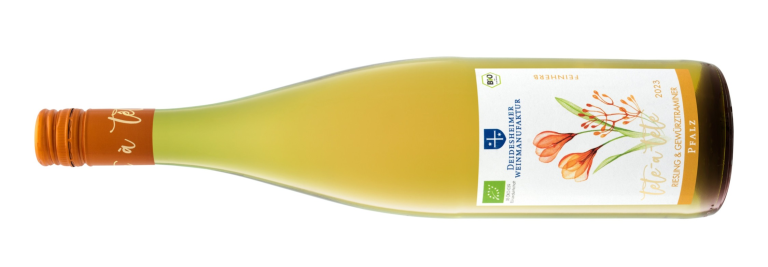Welcome to the latest Top Tips post which continues its quest for great value options among the High Street’s inexpensive ranges.
Our first stop is for a nicely crafted Australian shiraz that perfectly fits the slot for tasty but inexpensive red wine that, unobtrusively, enhances mid-week mealtimes.
Its companion is a bit of a surprise in the shape of subtle, peach-led gewurztraminer that provides an enjoyable “drink-anytime” option.
Enjoy them both.
Pictures and, where possible, hyperlinks are included with the descriptions of these wines.
Great informal, straightforward drinking

Of course, we all know that dense and complex top-level shiraz (syrah in France) attracts, and deserves, celebrity status.
However, straightforward, inexpensive versions like this have a role to play and are a great source of informal, everyday drinking.
Long and with attractive sweet edges, Australia’s 2020 Leaps & Bounds Shiraz (£7 – instead of £8 until 9 August – at Sainsbury’s and 13.5% abv) has a backbone of uncomplicated prune and bramble flavours.
Those components are well supported by firm acidity (but soft tannin) and pleasing suggestions of menthol, chocolate, aniseed and liquorice.
Definitely not what you expect.

Despite both wines using the same grape variety, this Chilean gewurztraminer is a very different animal to those classic versions from Alsace.
This is more of a drink anytime wine with much less texture than Alsace options and with the volume turned down appreciably on those trademark spicy elements.
While there are indeed hints of savoury spice in 2021 Cono Sur Gewurztraminer (£6 at Tesco and 12.5%) the primary factors at work here are ripe and perfumed peach, orange and oriental fruit flavours.
That all makes this a pleasant, restrained patio wine – but remember that its modest acidity means it may seem slightly sweeter than it actually is.
A Word of Thanks
I appreciate your patience this week while problems with the site were being sorted out. While I can bore for England about wine, technology and its arcana are a closed book to me.
Consequently, it does take a while for problems to be sorted out.
Let’s hope that “sorted out” is now the case – for as long as possible – and I am sorry for any inconvenience you were caused.
Join me again on Thursday for the post delayed from last week with what I recommend as Friday Night Specials and Sunday Best options along with updates on supermarket promotions.









8 responses
The Wine Society used to offer two Chilean Gewurtztraminers – but no more, sadly – Silbador and Zarcillo. I will definitely try the Cono Sur and if it is half as good as they were, it will be a bargain. Tons of flavour without the sickly sweetness the Alsace version often suffers from (in my opinion! 🙂
Chile is not an immediately obvious place for gewurztraminer but as Oz Clarke’s Grapes & Wines book says, it “.. is making some very convincing examples particularly from cool coastal and southerly vineyards”. And you cannot get much further south for vines than Bio Bio – home to this particular version. I understand your point about sweetness although gewurztraminer’s lack of acidity often makes it seem sweeter than its wine’s actual residual sugar figures. Let’s hope that Stevenage hears your plea though.
Hi Jerry,
Ewan here, from The Wine Society.
We no longer do these two gewürz that you mention, but there is still the 2020 Matetic Coralillo version that can be found on our website. Happy drinking!
Thanks for jumping in there Ewan – much appreciated.
I’m rather bemused by the idea of sickly sweet Alsace Gewurztraminer. I’ve visited many times tasted many wines from the grape, but none like that.
For sure, Mel, most Alsace wines (which, of course, come from a range of grape varieties) are – as you imply – delightfully dry. Two factors seem, however, to affect how gewurztraminer wines are perceived. One is the impression of sweetness that its oriental fruit flavours create. The other is the knotty question of acidity. Put a riesling and gewurztraminer with identical residual sugar levels together and the latter will probably taste sweeter because it usually has less acidity to counterbalance any natural sweetness. Another aspect of the sweetness debate is vendange tardive wine – where late harvested gewurztraminer really will be sweet, courtesy of botrytis influences.
Sorry, Brian, I wasn’t implying that most are delightfully dry. In fact Alsace Gewurz often has a fair bit of residual sugar. In a well-made wine (e.g. from Rolly Gassmann) this produces rich, characterful, deeply impressive wines. However, there is a general prejudiced idea that residual sugar is a “bad thing” and an erroneous belief that it is unsophisticated to drink them. This seems to render many people unable to distinguish between excellent and poor wines.
I am with you 100% on that prejudice about residual sugar always being bad. I suspect it is a hangover from the unmitigated sweet wines of our parent’s (or grandparent’s) generation. Even now, established commentators can get really acerbic about red wine with more than usual sugar levels, whereas chefs love the richness that they offer as a complement to dishes they have created.
However, as I think we agree, once you balance sweetness and acidity, the opulence and depth you describe converges with freshness to deliver wonderful wine. The only good aspect is that the unpopularity of sweet wines means that many of them are currently outstanding value for money.